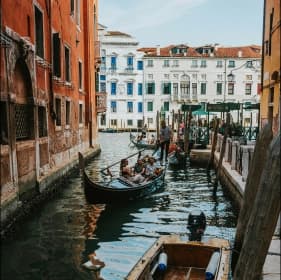Sao Bento station
If someone told you that one of Porto’s most visited tourist attractions is a train station, you might raise an eyebrow. But step into São Bento Station, and you’ll understand why. This is not just a place to catch a train — it’s a work of art, a historical timeline, and a window into Portugal’s soul.
Built at the turn of the 20th century, São Bento is covered in more than 20,000 azulejos — traditional blue-and-white tiles — that depict some of the most important moments in Portuguese history. For travelers and art lovers alike, it’s a must-see landmark that’s beautiful, free, and right in the center of Porto.
🏛️ The Station That Replaced a Monastery
Before trains arrived, the site of São Bento was home to the Convent of São Bento de Avé-Maria, a Benedictine monastery that dated back to the 16th century. In the late 1800s, as railways spread across Europe, the monastery was demolished to make way for modern transportation — but the name “São Bento” remained.
Construction of the current station began in 1900, with French-influenced architecture and a Beaux-Arts style facade. It officially opened in 1916, and it has remained one of Portugal’s most striking train stations ever since.
🧱 Though trains come and go, the station itself feels frozen in time — quiet, elegant, and full of stories.
🎨 The Famous Azulejo Murals
As soon as you enter São Bento’s main hall, you’ll be surrounded by floor-to-ceiling tile murals that cover over 500 square meters of wall space. These are not just decorations — they are historical paintings in ceramic.
What you’ll see:
-
Military conquests – including the Battle of Valdevez and the entrance of King John I into Porto
-
Traditional life scenes – markets, festivals, oxen-drawn carts, and peasant life
-
Royal events – the marriage of João I and Philippa of Lancaster
-
Transport evolution – from horse carriages to early steam trains
🎨 All murals were designed and painted by artist Jorge Colaço between 1905 and 1916.
📚 A Living Timeline of Portugal
The murals aren’t just beautiful — they educate. You can stand for 10 minutes and learn more about Portugal’s culture, legends, and politics than you might in a museum. And because they’re so detailed, every visit reveals something new — a different face, gesture, or moment hidden in the crowd.
💡 It’s a popular stop for school groups, guided tours, and history buffs — all for good reason.
🚉 Still a Functional Train Station
While the main attraction is its artwork, São Bento is still very much a working station, with trains running daily to destinations across northern Portugal, including:
-
Braga
-
Guimarães
-
Aveiro
-
Pocinho (scenic Douro Valley route)
So while you're admiring the tiles, you’ll hear announcements, see commuters, and watch travelers coming and going — giving the station a unique blend of the past and present.
📍 How to Visit São Bento Station
-
Location: Praça de Almeida Garrett, Porto city center
-
Entry: Free
-
Hours: Open daily (but less crowded in the early morning or late afternoon)
-
Metro stop: São Bento (Line D – Yellow)
🧭 It’s just a 5-minute walk from Sé do Porto, Rua das Flores, and the Clérigos Tower.
🧳 Travel Tips for São Bento Station
-
📸 Go early in the day to photograph the tiles without crowds.
-
📱 Use Google Lens or a tile guide to interpret the stories in each mural.
-
🧘 Take your time – sit on a bench and watch the light change across the tiles.
-
🚂 Catch a train! Even a short ride to a nearby town adds a fun travel twist.
-
🎧 Listen to local musicians – it’s common to hear live music echoing through the hall.
🗺️ What’s Nearby?
São Bento is located in Porto’s cultural core, with countless landmarks within walking distance:
-
Sé do Porto (Porto Cathedral) – Just uphill from the station
-
Rua das Flores – Charming pedestrian street filled with shops and cafés
-
Clérigos Church and Tower – For more views over the city
-
Palácio da Bolsa – The grand Stock Exchange Palace
-
Ribeira – A 10-minute walk down to the Douro riverfront
POPULAR DESTINATIONS

2 Days Route in Venice
Explore best spots of Venice in 2 days lorem ipsum dolor si lorem ipsum dolor si lorem ipsum dolor si

2 Days Route in Paris
Explore best spots of Venice in 2 days lorem ipsum dolor si lorem ipsum dolor si lorem ipsum dolor si

2 Days Route in Rome
Explore best spots of Venice in 2 days lorem ipsum dolor si lorem ipsum dolor si lorem ipsum dolor si


